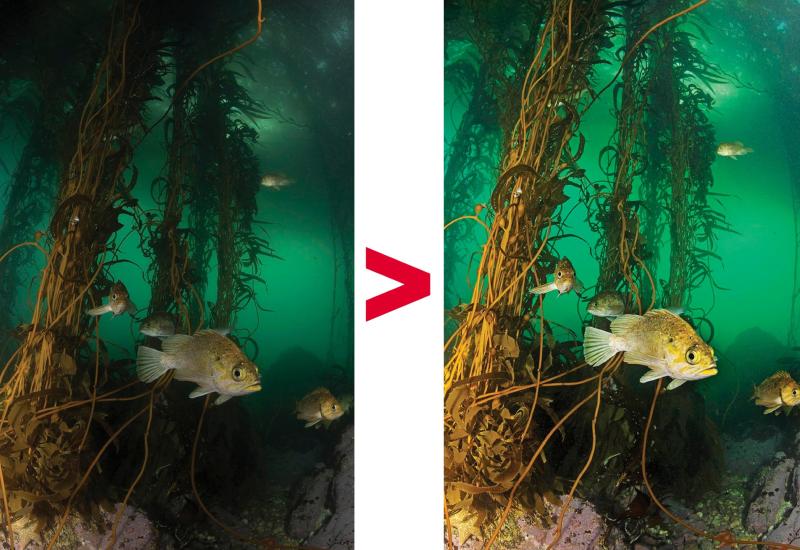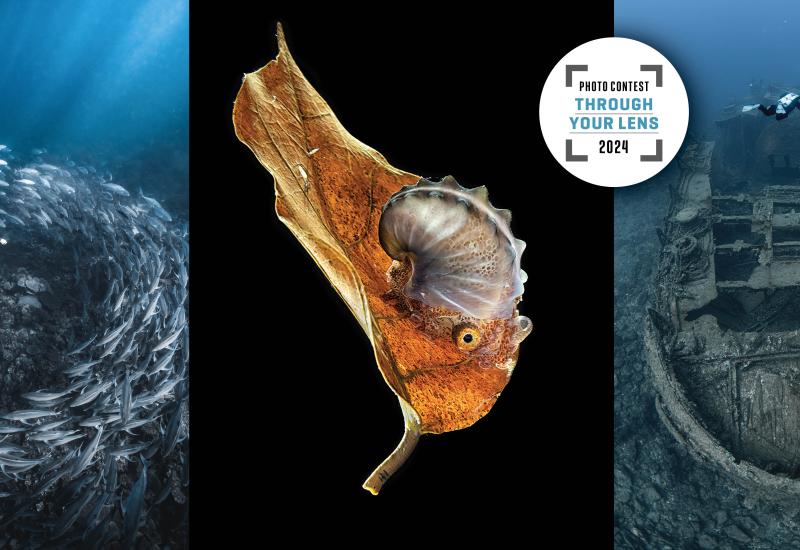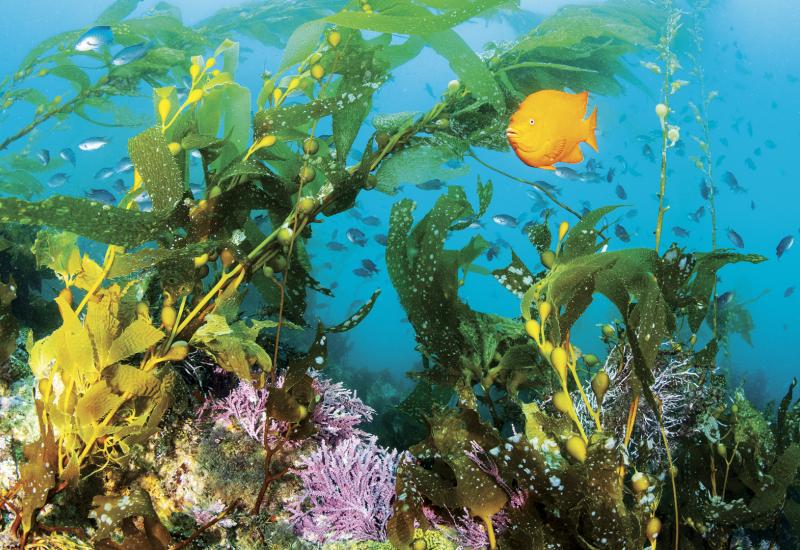Underwater Photos: 3 Tips for Shooting Fish Behavior
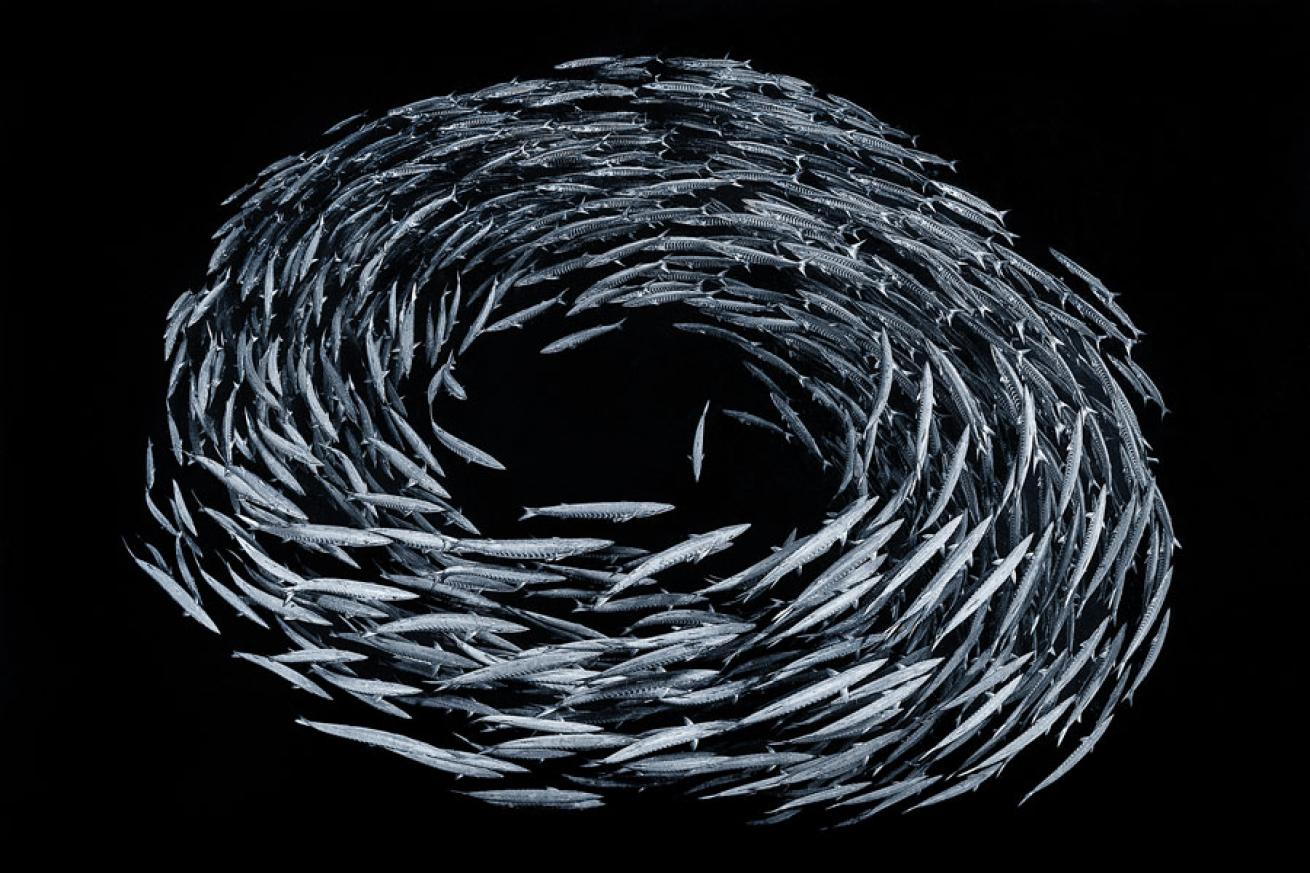
Alex MustardMany photographers are put off or intimidated by behavior photography because they don’t consider themselves marine-life experts. The secret is that you don’t need to know the names of all the fish and marine mammals to capture their behavior. Knowledge helps, but far more important is to dive slowly and really take a closer look at what is happening around you. Have you ever noticed that you often spot the most interesting subjects and behaviors as you wait out your safety stop? Sitting still and observing a single coral head can reveal some pretty impressive interactions. Spend your whole dive at this pace, and you will be amazed by what you see.
For example, schooling is one of the most common, and most beautiful, fish behaviors. With schools it’s all about shape, so timing is critical. This barracuda school was constantly shape-shifting; I waited for them to form this swirling circle before getting the shot.
-----------------------------------------------------------------------------
CAMERA Nikon D4, Subal housing // LENS Nikon 16mm fisheye // STROBES 2x Seacam 150 // SETTINGS f/10, 1/100 sec, ISO 400 // LOCATION Ras Mohammed, Egypt, Red Sea.
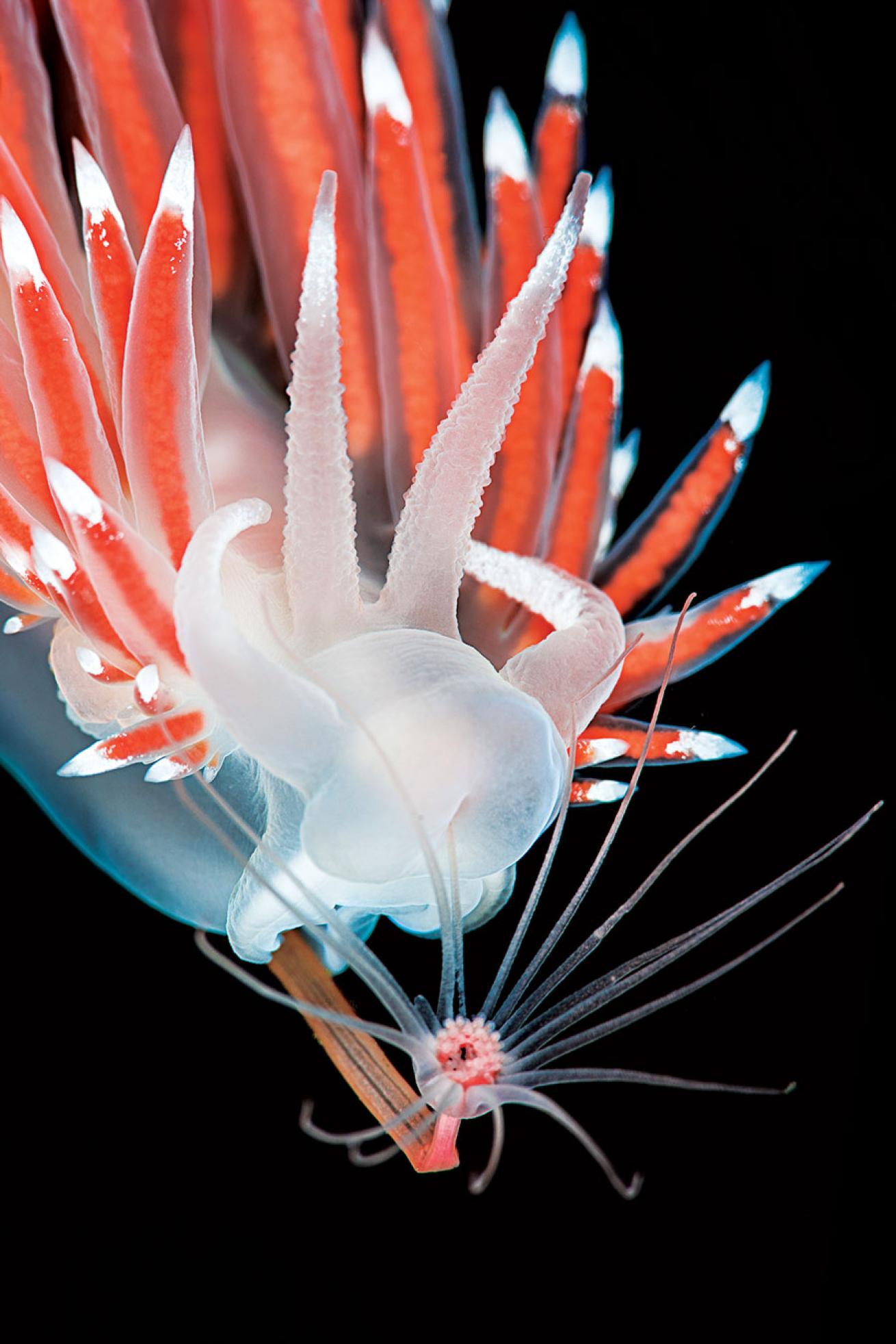
Alex MustardDiving with a macro lens is one of the best ways of spotting behaviors because it focuses your mind to slow down and look closer. Simple backgrounds help behaviors to stand out in images. Look for eye-catching shapes, like the barracuda, and frame them against open water. By using strobes, a fast shutter speed and small aperture, I was able to get this feeding sea slug against a clean black background.
A little research is invaluable. Simply knowing where animals live will really help make sense of a macro scene. It’s also a great idea to take the opportunity between dives to quiz the dive guides and benefit from their local knowledge.
** CAMERA** Nikon D800, Nauticam housing // LENS Nikon 105mm AF-S // STROBES 2x Inon Z240 // SETTINGS f/20, 1/320 sec, ISO 100 // LOCATION Gulen, Norway, North Atlantic Ocean

Alex MustardFrench photojournalist Henri Cartier-Bresson was the master of capturing the decisive moment. His street images were timed to freeze intimate events from everyday lives. The most powerful images tell a story and leave the viewer with no doubt as to why that moment in time was preserved. Behavior gives us the chance to supercharge the impact by pressing the shutter at just the right second. This young gray seal was frolicking with me, and I was able to get several shots when it playfully gaped its mouth.
** CAMERA** Nikon D4, Nauticam housing // LENS Sigma 15mm fisheye // STROBES 2x Inon Z240 // SETTINGS f/11, 1/160 sec, ISO 800 // LOCATION Farne Islands, England, North Sea.
Believe it or not, you don’t need a Ph.D. in marine biology to capture great pictures of behavior. All you need to do is slow down, take time to look at what is going on around you, and shoot at the all-important decisive moment.
Behavior is nature’s way of transforming your photographs from ordinary to outstanding, but you have to do your part too. First, you must dive well so your presence in your subject’s home is not an intrusion. Once you’ve got your buoyancy down, you’ll find yourself discovering a plethora of intimate moments and natural wonders that you otherwise might have missed.
Next you have to capture the peak of the action, where the behavior is most obvious and leaps out of the image. The good news is that the most photogenic behaviors are also the easiest to recognize.
The oceans are filled with millions of species, each with its own unique behavior and personality. Once you take the time to tune in, you will be happily rewarded with an inexhaustible supply of photo opportunities.


